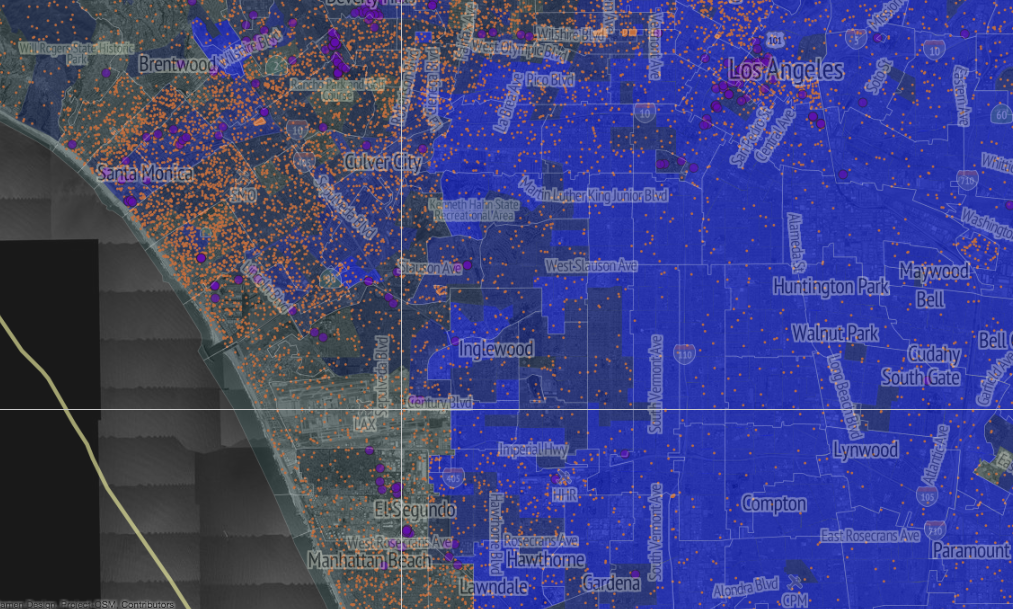Volkswagen cheated tests on 11 million diesel cars worldwide by engineering its cars to reduce emissions of nitrogen oxide pollutants during testing, even though they release up to 40 times more than what’s sanctioned by EPA standards once they’re on the road. In California, the company sold nearly 200,000 69,000* of those cars, which means people here will have to carry the health burdens associated with increased toxic emissions. But which people are we talking about?
I write about the ways in which communities of color too often absorb the negative effects of emissions and resulting climate change. And I’m also pretty fascinated with maps. That’s why a new interactive map produced by Kevala for the California Clean Energy Fund caught my attention.
The map shows a pollution and poverty index (this includes a whole bunch of pollutants), VW diesel cars, and electric vehicle stations.
[protected-iframe id=”4cb58c305d0112ee7fbc86ba6300227c-5104299-95490744″ info=”https://keva.la/vw” width=”700″ height=”500″]
The embedded version above is a bit limited; if you click on the map page, you might get more out of it. On the top right-hand side of the map, you can enter a county. By zooming in on a specific region, you get an interesting picture of the intersection of poverty and pollution. I searched Los Angeles County and found that there are more than 32,000 11,447* of these dirty VWs in the county — and they’re heavily concentrated in areas where rich white folks live, like Santa Monica. The map also illustrates that there will be 1.2 million expected annual asthma cases in the county, costing up to $8.5 million in healthcare costs. Those healthcare costs will be highest in zones with high pollution and poverty, like Lynwood. Oh, and no surprise where the electric vehicle charging stations are located: They’re mostly in affluent neighborhoods.
Volkswagen has until Friday to submit a plan to the California Air Resources Board on how it will fix its awful mess. One way it could do that, suggests the California Clean Energy Fund, is to provide increased financing to poor communities of color to purchase electric vehicles — along with charging stations. It’s unlikely VW will do that, but it would be a good start to addressing some of the harm it’s created for some of the most vulnerable people in California.
*Correction: An earlier version of the map in this story miscalculated the numbers of non-compliant diesels in California. The map and the story have been updated to reflect those changes.


